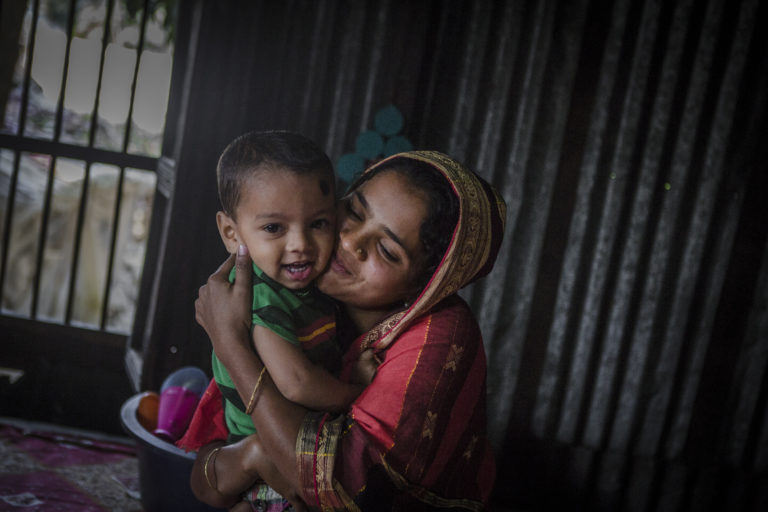This article was originally published by Save the Children
In many contexts, the youngest mothers (ages 15-24) are less likely than older mothers to use health services, including postpartum family planning (PPFP), for themselves and their children, increasing their vulnerability to rapid repeat pregnancy and poor health outcomes. At this life stage, a period of rapid change and vulnerability, it is vital young mothers get the support they need, and it is increasingly seen as a window of opportunity to shape life-long practices. A growing body of program experiences have shed light on first-time parents’ (FTPs) needs and related programming considerations. Evidence shows that comprehensive approaches addressing individual, family, community, and health system factors can increase FTPs’ use of PPFP and other essential health services. While showing promising impact, these comprehensive approaches have proven challenging to scale.
In Save the Children’s large-scale projects, we have long seen that the mothers bringing young children to immunization services, participating in community nutrition groups, or receiving household visits from community health workers are often young themselves. FTPs are often being reached, but not necessarily targeted with interventions addressing their family planning needs—despite evidence that improving birth spacing through PPFP contributes to diverse project goals.
This gives rise to two sets of sticky questions:
Could a large-scale project be enhanced to leverage its reach and connect FTPs to PPFP?
Could we add an activity, or rework an existing activity, to take advantage of a large-scale initiative’s reach of FTPs? For example, a community group for pregnant women or mothers could strengthen referral systems to connect the youngest members to health facilities. Alternatively, for FTPs delivering in facilities, we might augment counseling to address their unique needs, facilitating PPFP uptake before discharge. Such a “program enhancement” could maximize impact with limited resources, reducing missed opportunities to target a vulnerable population.
We need to understand whether such an enhancement could be effective in increasing PPFP use. But to be truly instructive, we also need to understand how the enhancement interacts with and is shaped by the “host project” and the broader health system—and how it can be sustained through existing platforms at scale.
Which brings us to the second, stickier question, one that is often ignored in evaluations of this kind.
What factors would shape implementation and impact of an enhancement to a large-scale project?
We know that context matters: country- and host project-specific factors—goals, strategies, supervision mechanisms, health worker workloads, even intrinsic and extrinsic motivators—will make or break design, implementation, and scale of even a simple tweak to planned activities. We also know that over time, approaches adapt to context and implementation learning—so that what started as Plan A evolves to become Plan D or H or even Plan M by the time we evaluate and scale up.
In other words, to sustainably embed an enhancement into the health system—and to inform similar endeavors—we’d need to unpack the “black box” between implementation and impact. What unique elements of the host project and health system influence an enhancement—and what questions would others need to raise to layer an enhancement in a different setting? How do the enhancement and its implementation evolve over time and in scale-up, and why? What unintended effects emerge from the interplay between the enhancement, the host project, and the broader health system?
Introducing Connect
Connect, with support from the Bill & Melinda Gates Foundation, is poised to grapple with these questions. Over 4 years, Connect will build on two Save the Children-led projects and design, scale, and evaluate an incremental enhancement to reach FTPs at scale.
In Bangladesh, Connect will partner with the USAID-funded MaMoni-Maternal and Newborn Care Strengthening Project (MaMoni MNCSP), which supports the Ministry of Health and Family Welfare to improve maternal and newborn health in ten focus districts. In Tanzania, Connect leverages the USAID-funded Lishe Endelevu project, which aims to reduce stunting in children under five and improve the diet of 1.5 million women of reproductive age.
Connect will rigorously evaluate the impact on FP use and, drawing from realist evaluation principles, dig into that “black box” between implementation and results. Connect will yield practical how-to guidance, informing other efforts to more efficiently and effectively target FTPs with PPFP.
Connect’s partnership
Save the Children, the project lead, leverages our FTP and health system strengthening expertise and multisectoral operating presence to spearhead the design and implementation of program enhancements with MaMoni MNCSP and Lishe Endelevu and country stakeholders.
The George Washington University Milken School of Public Health (GWU) evaluates the impact of the program enhancements through rigorous quantitative methods and contributes to a qualitative realist-inspired evaluation exploring factors shaping implementation, scale, and sustainability.
We’re excited to dive into these complex questions and look forward to sharing Connect’s results and lessons. For more information, check out Connect’s fact sheet or contact myahner@savechildren.org.
